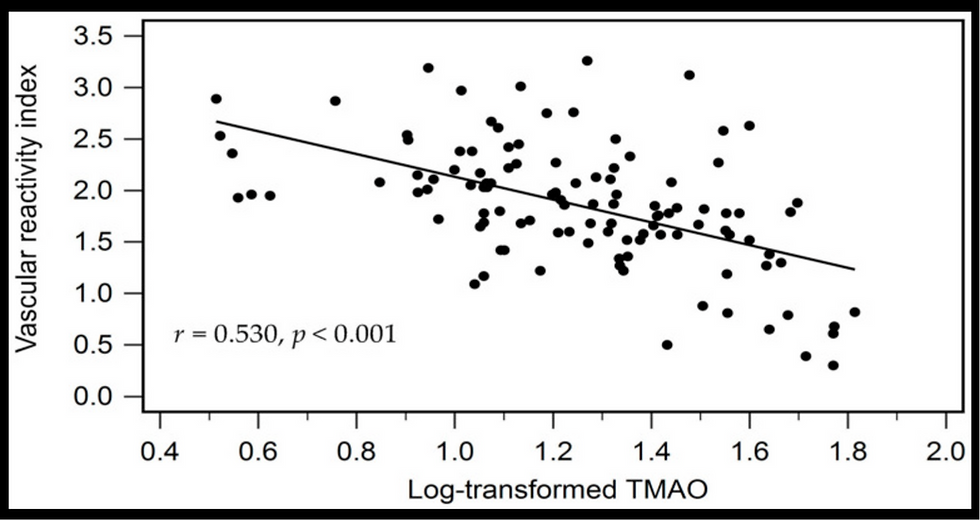New Clinical Trial Shows Weight Loss Reverses Endothelial Dysfunction
- heartlung
- Jan 16, 2023
- 2 min read
Updated: Jan 18, 2023
Obes Res Clin Pract 2021 Apr 10;S1871-403X(21)00055-7.
Successful weight loss reduces endothelial activation in individuals with severe obesity participating in a multimodal weight loss program
Sabine J M Sag 1, Christina Strack 1, Judith Zeller 1, Margareta Mohr 1, Thomas Loew 2, Claas Lahmann 3, Lars S Maier 1, Marcus Fischer 1, Andrea Baessler 4
1 Clinic for Internal Medicine II, University Hospital of Regensburg, Franz-Josef-Strauss Allee 11, 93053 Regensburg, Germany.
2 Department of Psychosomatics, University Hospital of Regensburg, Franz-Josef-Strauss Allee 11, 93053 Regensburg, Germany.
3 Department of Psychosomatic Medicine und Psychotherapy, Center for Mental Health, Faculty of Medicine, University of Freiburg, Hauptstraße 8, D-79104 Freiburg, Germany.
4 Clinic for Internal Medicine II, University Hospital of Regensburg, Franz-Josef-Strauss Allee 11, 93053 Regensburg, Germany. Electronic address: andrea.baessler@ukr.de.
Abstract Introduction: Endothelial dysfunction is a very common finding in obesity and metabolic syndrome. The aim of our study was to investigate if longterm weight reduction (WR) success may reverse endothelial activation in individuals with severe obesity participating in a multimodal WR program. Methods: Participants with obesity (øBMI 40.3 ±7.5 kg/m2) underwent a standardized non-surgical 1-year WR program. Carotid artery studies and determination of endothelial function biomarkers were performed at baseline and after 1 year. Individuals were dichotomized in “successful WR” (% WR≥10% of initial body weight) and “failed WR” (% WR<10% of initial body weight). Results: From 191 people with obesity, 115 achieved successful WR. Compared to controls without obesity (n=44) participants with obesity had higher carotid intima media thickness as well as higher sICAM-1, sE-selectin, MMP-9, hsCRP and IL-6 levels. After 12 months follow up delta values of inflammation and endothelial adhesion markers were significantly different between participants with obesity and successful WR and participants with obesity and failed WR, in favour of the successful WR group (mean ± standard deviation): ΔhsCRP (-5.2 mg/L ±7.8 vs. 1.1 mg/L ±5.1, P<0.001; Padj=0.009), ΔIL-6 (-1.0 pg/mL ±3.4 vs. 0.5 pg/mL ±2.6, P<0.001; Padj=0.057), ΔsE-selectin (-19.0 ng/mL ±24.4 vs. 39.2 ng/mL ±20.3, P<0.001; Padj<0.001), ΔsICAM-1 (-26.4 ng/mL ±68.8 vs. 10.6 ng/mL ±73.9, P=0.004; Padj=0.805) and ΔoxLDL (-4 mg/dL ±30 vs. 5 mg/dL ±25, P=0.004; Padj=0.473). In linear regression analysis reduction of BMI was significantly associated with improvement of several endothelial dysfunction biomarkers with the strongest effects for ΔsE-selectin and ΔhsCRP. Conclusion: Our data corroborate the finding that obesity leads to endothelial dysfunction. Furthermore, successful non-surgical WR may at least partially reverse endothelial activation implicating cardiovascular health benefits of WR in people with severe obesity. Keywords: Endothelial function; Obesity; Weight reduction. Copyright © 2021. Published by Elsevier Ltd.
![Lipoprotein(a) levels predict endothelial dysfunction in maintenance hemodialysis patients: evidence from [VENDYS] vascular reactivity index assessment](https://static.wixstatic.com/media/dac531_5285607cc591409a9d83746f042af7c6~mv2.png/v1/fill/w_980,h_980,al_c,q_90,usm_0.66_1.00_0.01,enc_avif,quality_auto/dac531_5285607cc591409a9d83746f042af7c6~mv2.png)


Comments